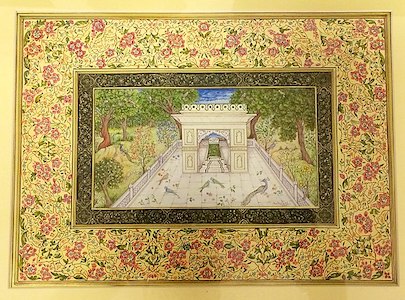
Professor Hajnalka Kovacs and Ahmad Rashid Salim join us to discuss the poetry of Bedil Dihlavī (d. 1720), one of the greatest and most influential Persian-language poets of the Indian subcontinent. He wrote over 2,800 ghazals, four mathanwis (a genre of narrative verse in rhymed couplets), and other poetic texts, all of which circulated throughout the Indian Subcontinent, Central Asia, and the Safavid and Ottoman Empires. Known for its complex and ambiguous style, creative metaphors and images, and adaptations of Sanskrit and Hindu themes and figures, Bedil’s poetry is highly philosophical, brilliantly translating and thinking through the issues of Ibn al-‘Arabi’s metaphysics in his own unique poetic idiom. Popular in his own day, he influenced and inspired many later poets, such as Mirza Ghalib (widely regarded as the greatest Urdu-larguage poet), and Muhammad Iqbal called Bedil “perhaps the best poet-philosopher India has produced since the times of Shankar Acharya.” Although colonial and nationalist politics and changing tastes diminshed Bedil’s popularity in the 19th and 20th centuries in Iran and India, he has remained extremely popular in Afghanistan and Central Asia, and now his works are increasingly appreciated in the Indian subcontinent, Iran, and in Europhone scholarship.
.
Links and Further Reading/Listening:
.
Translations of Poems from the Episode
.
Prashant Keshavmurthy, “Some Couplets of Bedil Dehlavi,” 3quarksdaily
.
Rana Safvi, “Baagh e Bedil : Dargah of Mirza Abdul Qadir Bedil”
.
Prashant Keshavmurthy, “Circling the Shrines of a Hundred Mouths: Reading and Remembering Bedil”
.
Ali Karjoo Ravary, “Mirrors in the Dream of the Alone: A Glimpse at the Poetry of Bīdil.” Islamic Thought and the Art of Translation (Brill, 2023), 30–54.
.
Moazzam Siddiqi, BĪDEL, ʿABD-AL-QĀDER Encyclopedia Iranica
.
.
Mikkelson, Jane. “Flights of imagination: Avicenna’s Phoenix (ʿAnqā) and Bedil’s figuration for the lyric self.” Journal of South Asian Intellectual History 2, no. 1 (2020): 28-72.
.
Hajnalka Kovacs, ““No Journey is Possible Outside of the Heart”: The Story of King Lavaṇa in Bedil’s Muḥīṭ-i aʿẓam.” Journal of South Asian Intellectual History 2, no. 1 (2020): 73-115.
.
Kovacs, Hajnalka. “The Circulation of the Astonishing Cup: The Many Facets of Wine Symbolism in Bedil’s Sāqīnāmah, Muḥīṭ-i aʿẓam.” In “Passed around by a Crescent”, pp. 325-346. Ergon-Verlag, 2022.
.
Hajnalka Kovacs, “Challenges of and Strategies for Translating Indo-Persian Poetry and Prose: The Case of Bedil (1644–1720).” In The Routledge Handbook of Persian Literary Translation, pp. 110-130. Routledge, 2022.
.
Mikkelson, Jane. “Of parrots and crows: Bīdil and Ḥazīn in their own words.” Comparative Studies of South Asia, Africa and the Middle East 37, no. 3 (2017): 510-530
.
Mikkelson, Jane. “Worlds of the Imagination: Bīdel of Delhi (d. 1720) and Early Modern Persian Lyric Style.” (2019). PhD Diss, University of Chicago.
.
Hajnalka Kovacs, “The Tavern of the Manifestation of Realities”: The Mas̱navī Muḥīṭ-i Aʿẓam by Mīrzā ʿAbd al-Qādir Bedil (1644–1720).” PhD diss., University of Chicago (2013).
.
Mikkelson, Jane. “Color’s Fracture: Translating Fugitive Experience in Early Modern Persian Poetry.” In The Routledge Handbook of Persian Literary Translation, pp. 247-285. Routledge, 2022.
.
Host: Oludamini Ogunnaike
Guests: Hajnalka Kovacs and Ahmad Rashid Salim
Edited By: Alana Bittner, WJTU